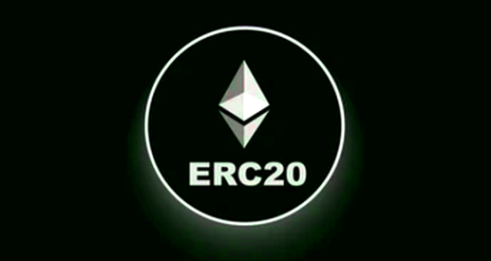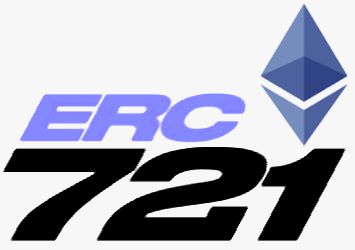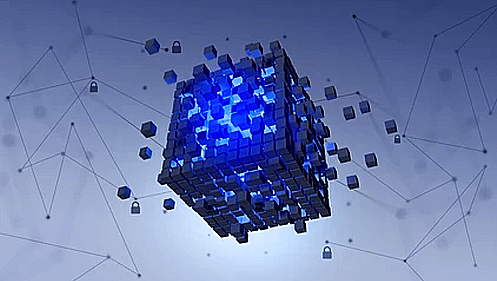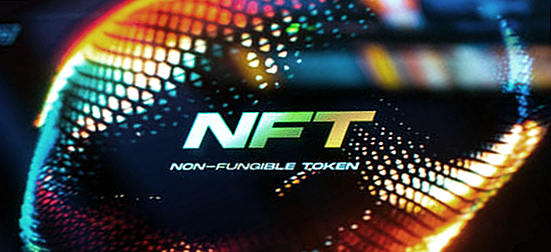Accredited InvestorsAltcoinAnatoli UnitskyAnti-Money Laundering (AML) In CryptoAPIArbitrageArtCoin TokenArticle DirectoryASICAuction Terminology GlossaryBasics of Stock Market InvestingBear MarketBest Crypto Payment Provider In the WorldBitcoinBlockchainBlockchain ConfirmationBlockchain Consensus MechanismBlockchain ForkBlockchain GlossaryBored Ape Yacht ClubBuild a Business That OutperformsBull MarketBuying SkyWay SharesByzantine Fault Tolerance (BFT) ExplainedCasascius CoinCentral Bank Digital Currency (CBDC)Centralized Crypto ExchangeCoinCoinsetCold WalletCollateralCommodity Futures Trading Commission (CFTC)Cross-Chain TechnologyCRUCrypto ExchangeCrypto GlossaryCrypto JokesCrypto Terms to KnowCrypto TickerCryptocurrencyCryptographyCryptojackingCryptounit BlockchainCryptounit GlossaryCryptounit ProgramdApp (Decentralized Application)Dead CoinDecentralized Exchange (DEX)Decentralized Finance (DeFi)Difference Between Bitcoin and EthereumDifferent Ways of Investing MoneyDigital CurrencyDistributed LedgerDo Your Own Research (DYOR)Dollar Cost Averaging (DCA)Dow Jones Industrial Average (DJIA)EncryptionERC-20ERC-721EthereumEvoScentFear Of Missing Out (FOMO)Fear, Uncertainty and Doubt (FUD)Fiat MoneyFNT Fintech CompanyGenesis BlockGlobal Unit PayGlossary of Banking TermsGlossary of Business TermsGlossary of Financial TermsHalvingHODLHot WalletHow Do I Start InvestingHow Rich is Satoshi Nakamoto?How to Create a BlockchainHow to Find Private InvestorsHow to Get Into FintechHow to Program Smart ContractsI Am Thrilled to Be a Part of This Global ProjectInitial Coin Offering (ICO)Initial Public Offering (IPO)Initial Token Offering (ITO)Innovation Basalt TechnologyInnovative Transportation TechnologiesInternational Bank Account Number (IBAN)Investing in Gold Mining StocksInvesting in Gold MiningJagerJoy of Missing Out (JOMO)Know Your Customer (KYC)LedgerLiquidity in CryptocurrencyMaker and Taker Fees in Crypto TradingMarket Capitalization (Market Cap)Meme CoinMetal Credit CardMetaMaskMillenials Now Have Access to Generational WealthMy Best Investment EverNew Digital EvolutionNFT GlossaryOff-Chain TransactionsOn-Chain TransactionsOpen Edition NFTPeer-to-Peer (P2P)Personal Loan GlossaryProbably the Best STO on the MarketProof of Stake (PoS)Real Estate Glossary of TermsReal Estate Investing GlossaryRebase TokenSecurities and Exchange Commission (SEC)Security Token ExchangesSecurity Token Offering (STO)Soulbound Decentralized Identities for Security TokensSoulbound ID Launch by Stobox Proves a SuccessSoulbound TokensStoboxStock Market GlossaryTestimonialsTether Platform and Token (USDT)UnitEx ExchangeUnitsky String TechnologiesUNTBUSDUValidatorWe Started Investing When We Were 25What are Blue Chip NFT?What are Blue Chip Stocks?What are Crypto Assets?What are Crypto Smart Contracts?What are CryptoPunks NFT?What are Digital Assets?What are Digital Collectibles?What are Gas Fees?What are Gas Wars?What are Hashmasks?What are Non Fungible Tokens?What are Non-Sufficient Funds (NSF)?What are Soulbound Tokens (SBT)?What are Stablecoins in Crypto?What are Transactions Per Second (TPS)?What are Utility NFTs?What are Utility Tokens?What Does Burning Crypto Mean?What Does Diamond Hands Mean?What Does Paper Hands Mean?What Does To The Moon Mean?What Does WAGMI Mean?What Happened to Satoshi Nakamoto?What is a 51% Attack?What is a Baby Boomer?What is a Backlink?What is a Banner?What is a Barcode?What is a Bid-Ask Spread in Crypto?What is a Block in Blockchain?What is a Block Reward?What is a Blockchain Address?What is a Blockchain Node?What is a Blockchain Oracle?What is a Blog?What is a Bond?What is a Bot?What is a Broker?What is a Business Accelerator?What is a Cash Cow?What is a Commercial Bank?What is a Commodity?What is a Con?What is a Credit?What is a Credit Limit?What is a Credit Rating?What is a Crypto Airdrop?What is a Crypto Bridge?What is a Crypto Scam?What is a Crypto Token?What is a Crypto Wallet?What is a Crypto Whale?What is a Crypto Winter?What is a Cryptocurrency Public Ledger?What is a Cryptocurrency Roadmap?What is a DAO?What is a Dark Pool?What is a Day Trader?What is a Dead Cat Bounce?What is a Default?What is a Derivative?What is a Digital Credit Card?What is a Fiscal Quarter?What is a Fungible Token?What is a Governance Token?What is a Grace Period?What is a Hard Fork?What is a Hot Wallet?What is a Hybrid Blockchain?What is a Hybrid PoW/PoS?What is a Joint Account?What is a Market Cap?What is a Merkle Tree in Blockchain?What is a Mining Farm?What is a Nonce? What is a PFP NFT?What is a POS System?What is a Prepaid Card?What is a Private Blockchain?What is a Private Key?What is a Public Blockchain?What is a Public Key?What is a Reserve Currency?What is a Ring Signature?What is a Routing Number?What is a Rug Pull in Crypto?What is a Safe Deposit Box?What is a Satoshi?What is a Security Token?What is a Seed Phrase?What is a Shitcoin?What is a Sidechain?What is a Soft Fork?What is a Spot Market?What is a State Bank?What is a SWIFT Code?What is a Tax Identification Number (TIN)?What is a Time Deposit?What is a Transaction Account?What is a Variable Interest Rate?What is a Virtual Assistant (VA)?What is a Virtual Card?What is a Virtual Currency?What is a Visa Card?What is a Whitelist in Crypto?What is a Whitepaper?What is Accounts Payable (AP)?What is AMA in Crypto?What is Amortization?What is an Accrual?What is an ACH Transfer?What is an Actuary?What is an Addendum?What is an Algorithm?What is an Angel Investor?What is an Annuity?What is an Asset?What is an ATM?What is an Atomic Swap?What is an Audit?What is an Avatar?What is an EIN?What is an Embargo?What is an Entrepreneur?What is an IDO (Initial Dex Offering)?What is an Interest Rate?What is an Internet cookie?What is an Investment Bank?What is an NFT Drop?What is an NFT Floor Price?What is an Ommer Block?What is an Orphan Block?What is an Outstanding Check?What is an Overdraft?What is Artificial Intelligence (AI)?What is B2B (Business-to-Business)?What is B2G (Business-to-Government)?What is Bartering?What is Bitcoin Dominance?What is Bitcoin Pizza Day?What is Blockchain Immutability?What is Blockchain Used For?What is BRICS?What is Business-to-Consumer (B2C)?What is C2C (Customer to Customer)?What is Capitalism?What is Catfishing?What is CFD Trading?What is Check Kiting?What is Cloud Mining?What is Communism?What is Content Marketing?What is Decentralization in Blockchain?What is DeFi in Crypto?What is Delisting?What is Depreciation?What is Digital Marketing?What is Diversification?What is Double Spending?What is Dumb Money?What is Dumping?What is Earnings Per Share (EPS)?What is Economics?What is Email Marketing?What is Equity?What is Etherscan?What is Fintech?What is Foreign currency?What is Forex?What is Fundamental Analysis (FA)?What is GameFi?What is Generative Art NFT?What is Gwei?What is Hard Currency?What is Hash Rate?What is Hashing in Blockchain?What is Inflation?What is Initial Game Offering (IGO)?What is Interest?What is Interest Income?What is Mainnet?What is Mastercard?What is Metaverse in Crypto?What is Mining in Cryptocurrency?What is Minting NFT?What is Mobile Banking?What is Money Laundering?What is NFT Alpha?What is NFT Metadata?What is NFT Rarity?What is NGMI Meaning?What is Nominal Interest Rate?What is Online Banking?What is Open-End Credit?What is OpenSea NFT Marketplace?What is Personal Identification Number (PIN)?What is Play-to-Earn?What is Polygon?What is Proof of Authority (PoA)?What is Proof of Work (PoW)?What is Public Key Cryptography?What is Pump and Dump?What is Quantum Computing?What is Refinancing?What is Retail Banking?What is Ripple?What is Sharding?What is Slippage in Crypto?What is Smart Money?What is Solvency?What is Soulbound ID?What is SSL?What is Staking in Cryptocurrency?What is Technical Analysis (TA)?What is Testnet?What is the Ask Price?What is the Better Business Bureau (BBB)?What is the Bid Price?What is the Dark Web?What is the InterPlanetary File System (IPFS)?What is the Gold Standard?What is the Lightning Network?What is the Prime Rate?What is the Sandbox?What is the Secondary Market?What is the World Bank?What is Tier 1 Capital?What is Tokenomics?What is TRC-20?What is Universal Banking?What is Unspent Transaction Output (UTXO)?What is Usury?What is Volatility in Crypto?What is Wash Trading?What is Web3?What is Whisper?What is XRP?What is Zero-Knowledge Proof (ZKP)?Who is Beeple?Who is Satoshi Nakamoto?Who is Vitalik Buterin?Why Tokenization is a Safe HavenWhy You Should Try Your Hand at Trading
ERC-20
- Home
- Blockchain Glossary
- ERC-20
In 2015, the popularity of smart contracts was on the rise, but some challenges remained unresolved. With anyone able to create tokens, a large number were being generated. However, there was no standard method for ensuring that these various tokens could be created, utilized, and traded by all blockchain users.

Without a standardized token framework, each individual application would require its own token, requiring users to find a way to convert them between the numerous apps being developed.
What is ERC-20?
ERC-20 is the technical standard for any token supported by the Ethereum network.
It is needed for all smart contracts on the Ethereum blockchain and is essential for the implementation of Ethereum tokens since it sets the set of rules for all of these tokens.
The ERC-20 standard defines a set of criteria that must be fulfilled for a token to function effectively inside the Ethereum ecosystem. As a result, ERC-20 should not be considered a piece of code or software. It is better stated as a technical guideline or specification.
For some time, the ERC-20 standard has been a popular conduit for the production of new tokens in the cryptocurrency market. It has been especially popular with ICOs and crowdfunding companies. Tens of thousands of unique tokens have already been produced and are working in accordance with the ERC-20 standard.
The ERC-20 standard allows developers to better predict the interaction of multiple tokens and apps. It also specifies how ERC-20 tokens are exchanged on the Ethereum blockchain, as well as how their supply and address balances are continuously stored.
While numerous ERC-20 smart contracts are used to conduct various routines and tasks in digital space, many of them have also been used to issue non-fungible tokens (NFTs) for the purpose of an initial coin offering (ICO), which is the cryptocurrency industry's equivalent of a stock market initial public offering (IPO). An ICO is launched by a cryptocurrency firm intending to generate funding for the creation of a new coin, dApp, or service.
Technically, the ERC-20 standard defines six functions that preserve some of the characteristics and functionality of Ethereum-based digital tokens. These functions contain how tokens are moved between addresses as well as certain crucial token smart contract data such as symbol, name, and supply:
- TotalSupply - provides data on the overall token supply.
- BalanceOf - provides the owner's account balance.
- Transfer - sends a specific quantity of tokens to a specified address.
- TransferFrom - performs a given number of token transfers from a specified address.
- Approve - Allow a spender to withdraw a given quantity of tokens from a specified account.
- Allowance - returns a set number of tokens to the owner from a spender.
While ERC-20 has received extensive support in the form of new coins that adhere to its specifications, many developers think ERC-20 is limiting or problematic in one or more ways. As a result, various alternative token standards have been proposed since the introduction of ERC-20.
These include ERC-223, which tries to fix a problem with the ERC-20 approval and transfer parts, ERC-621, which offers the same fundamental functionality as ERC-20 but adds the ability to increase or reduce the total token supply, and ERC-827, which allows a holder to authorize the use of tokens by a third party.
Objectives of the ERC-20 Standard
The ERC-20 standard plays a crucial role in the blockchain space by defining a standardized set of rules that all Ethereum tokens created with smart contracts must follow. This standard covers crucial aspects such as token transfer, transaction approval, data access, and total token supply.
By adhering to these rules, ERC-20 ensures that developers can accurately predict how new tokens will interact within the Ethereum ecosystem, eliminating the need for redoing existing projects each time a new token is introduced. Moreover, projects developed in the future can be assured of compatibility with existing projects, as long as the new tokens abide by the ERC-20 rules.
Fortunately, the majority of token developers have adopted the ERC-20 standards, resulting in most Ethereum tokens being ERC-20 compliant.
The Impact of ERC-20
The ERC-20 standard has enabled the widespread adoption of Initial Coin Offerings (ICOs) in recent years and facilitated the development of decentralized applications (dApps) on the Ethereum platform.
By providing a standard protocol, the ERC-20 standard simplifies the process for developers of dApps to create new tokens. The standard allows for the creation of tokens with high liquidity, and smart contract transactions are considered low-risk if properly programmed.
Related Articles

ERC-721
The year 2017 saw the emergence of ERC-20, which became the Ethereum token standard and paved the way for a plethora of ICOs. Fast forward to today, ERC-721 has taken center stage by launching countless...

Blockchain
The blockchain, as a distributed ledger technology (DLT), is purposefully designed to be very resistant to manipulation and fraud. This is because, as a database of records...

What are Crypto Smart Contracts?
Smart contracts operate in the background of many consumer crypto products, so if you're doing anything other than buying and holding cryptocurrencies, you've probably...

dApp
dApps are stored and executed on a blockchain system, usually Ethereum, and their validation is carried out using cryptographic tokens.

What are Non Fungible Tokens?
Non fungible tokens (NFTs) are cryptographic tokens that represent a unique digital or physical asset. Within a blockchain network, they serve as verifiable proofs of...
- Home
- Blockchain Glossary
- ERC-20